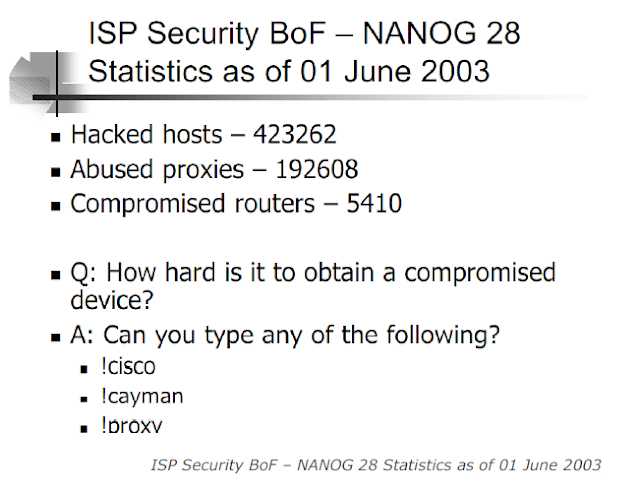Network Device Compromise
Obviously this is the first (and probably most likely) possibility that comes to mind. The North American Network Operators’ Group periodically collects data on network security incidents amongst its members. The following slide shows that devices from carrier environments actually get compromised in the real world:
Device Injection
The term “device injection” designates all scenarios where an untrusted party is enabled to place a device under its own control in the MPLS network of a carrier. While this may seem highly unlikely for an attacker (to “insert” an own device in a datacentre with strong physical access controls) it should be noted that some carriers allow very large customers to run their own PE routers (thereby potentially violating the assumption of a “trusted core which is solely managed by the carrier”). Similar scenarios might arise when PEs are located on customer premises which is why this practice is commonly advised against, see for example the following slide from a Cisco Live conference in 2010:
Wire Access
By this term all those scenarios are designated where an attacker gains access to the traffic path of certain packets without necessarily having compromised a device. This includes physical access to the wire as well as traffic redirection attacks in shared network segments.



Добавить комментарий